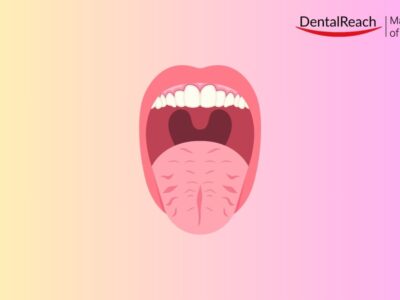What is artificial intelligence (AI)?
Disruptive technology is defined as an innovation that drastically disrupts the way consumers think and businesses operate. Disruptive technologies include automobiles, telephones, computers, and the internet. Artificial Intelligence (AI) is rapidly progressing from a future technology to a disruptive technology.
In our daily lives, we are surrounded with AI. Artificial intelligence (AI) has been ingrained in our daily lives thanks to our smartphones. AI algorithms are used by social media to improve our online experiences and recommend personalised content and adverts. Similarly, AI algorithms are used in various technologies such as smart assistants (Siri, Alexa), self-driving cars, phone cameras, and spam filters.
Machine learning (ML) and Deep learning (DL)
AI is an umbrella phrase that refers to a computer algorithm that can simulate human intelligence by performing cognitive functions such as learning and problem-solving. Machine Learning (ML) and Deep Learning (DL) are two further subcategories of AI that are frequently interchangeably utilised, which is incorrect. As a result, a greater understanding of their differences is required. Simply described, machine learning (ML) is a set of specialised statistical algorithms that learn patterns from given data and generate predictions based on unknown data. DL is a more advanced variant of ML that is based on the human brain (Fig. 1).

Artificial intelligence (AI) is a broad phrase that refers to a computer algorithm that can execute cognitive processes in the same way that humans do.
DL is built on an elementary unit known as artificial neurons (perceptron), which are layered in three layers (input, hidden, and output) to form an Artificial Neural Network (ANN). The phrase 'Deep Learning' refers to an ANN with multiple hidden layers, as well as an input and output layer (Fig. 2).

Recent AI research has shifted its focus from machine learning to deep learning, owing to DL's numerous advantages. DL algorithms can learn features and recognise patterns on their own, whereas ML algorithms require manual input from subject experts, which is an expensive and time-consuming process. In addition, if an ML algorithm produces an incorrect forecast, a topic expert must make changes to enhance it. The algorithm in DL can measure its accuracy and, as a result, change and improve itself at the next iteration. DL can attain extremely high accuracy levels as a result of these characteristics, making it more helpful in real-life applications.
Computer vision (the capacity to recognise and identify images), natural language processing (the ability to understand and contextualise words), and audio signal processing are all using deep learning (speech recognition). Computer vision, which uses Convolution Neural Network (CNN) as a special form of DL approach for image processing, has seen the most significant uptake of AI in dentistry.
"While the algorithm does a good job of recognising teeth, it is hampered by artefacts, disease, impacted teeth, and various types of dental implants."
A CNN is a more advanced artificial neural algorithm (ANN) that includes a specialised layer known as the convolutional layer. This convolutional layer works like a sliding window, looking for certain elements in an image such as borders, forms, edges, and colours in order to compress complex images into a feature map for faster processing.
In dentistry, AI has clinical applications.
Despite its acceptance in other areas, artificial intelligence (AI) has yet to make its way into medical and dental practise. Artificial intelligence (AI) research in dentistry is relatively new.
A few instances are shown below.
Charting software that is fully automated
To automate dental charting on radiographs, several machine learning and deep learning algorithms are being tested. The most common radiograph used for dental charting is the orthopantomogram (OPG). However, researchers have discovered that it is a difficult task. This is due to the OPG's overlapping anatomy (zygoma, sinuses), which causes the algorithm to become confused. While the algorithm does a good job of recognising teeth, it is hampered by artefacts, disease, impacted teeth, and various types of dental implants.
"It should be noted that dentists do not entirely rely on dental radiographs for caries detection, therefore not integrating patient history and clinical examination is a restriction of automated caries detection."
Endodontics
In endodontics, ML models have been evaluated for determining working length and have performed well. More CNN-based DL models are being investigated for diagnostically demanding tasks such root fracture detection and early periapical lesion detection, with encouraging results so far.
Detection of caries
On periapical (PA) and bitewing (BW) radiographs, there is ongoing research on detection occlusal and proximal caries. Caries detection has been done using both ML and DL models. It should be noted that dentists do not entirely rely on dental radiographs for caries detection, and hence an automated caries detection drawback is the lack of patient history and clinical examination.
Periodontology
Algorithms are being developed to diagnose treatment options and estimate the prognosis of periodontitis-affected teeth. The algorithms are better at making accurate predictions for single-rooted teeth than for multirooted teeth, therefore the first attempts at this endeavour aren't looking promising.
Orthodontics
Before beginning treatment, the most crucial phases in orthodontics are diagnostic and planning. To design extraction versus non-extraction treatment, artificial intelligence is being developed. Radiographs, pretreatment pictures, and study models are generally used to help the orthodontist make these judgments. As a result, it's not surprising that the AI that was put to the test failed miserably when it came to deciding whether to extract or not to extract based solely on radiographs.
Oral cancer
Oral malignancies must be detected correctly and early in order for patients to have a good prognosis. In this field of study, AI has showed a lot of potential. Researchers have demonstrated that DL models have a high diagnostic potential for detecting malignancies both radiographically and histologically. In addition, AI has been demonstrated to diagnose lesions faster than human experts.
Limitations
Deep learning, in particular, is data-intensive; in order to be accurate, the algorithm must be trained on enormous amounts of labelled data. This has spawned a market for massive datasets as well as a slew of ethical issues. Is it the patient or the healthcare provider who owns this information? This is a question that must be addressed. Before using a patient's radiographs for AI development, the patient's permission must be obtained. There are serious fears that patient data would be utilised unethically by the healthcare industry and insurance firms for targeted advertising and premium decision-making.
Furthermore, how will a diagnostic discrepancy between the dentist and the AI technology be resolved? Who will be held responsible for any negative consequences that happen as a result of AI technology's incorrect diagnosis?
The present scientific literature on AI-related dental research is inconsistently documented, resulting in a high level of variability. Closer examination reveals that the dental AI models are overfitted and have questionable generalizability. A framework to oversee open AI research and control the quality of AI software must be established.
Conclusion
The use of artificial intelligence (AI) has the potential to increase diagnostic accuracy and efficiency. However, AI in dentistry is still in its infancy. With the introduction of DL, there has been a surge in interest in AI-related research and development. Although work is being done in nearly all dental specialties with promising results, present AI technology is task-specific, lacks generalizability, and is far from being a trustworthy auxiliary for dental practitioners. However, with time, it is hoped that the promising first results would blossom into practical solutions in which AI and health-care providers may collaborate to improve patient care.
Reference:
Umer, F. Could AI offer practical solutions for dentistry in the future?. BDJ Team 9, 26–28 (2022). https://doi.org/10.1038/s41407-022-0830-1




















Comments